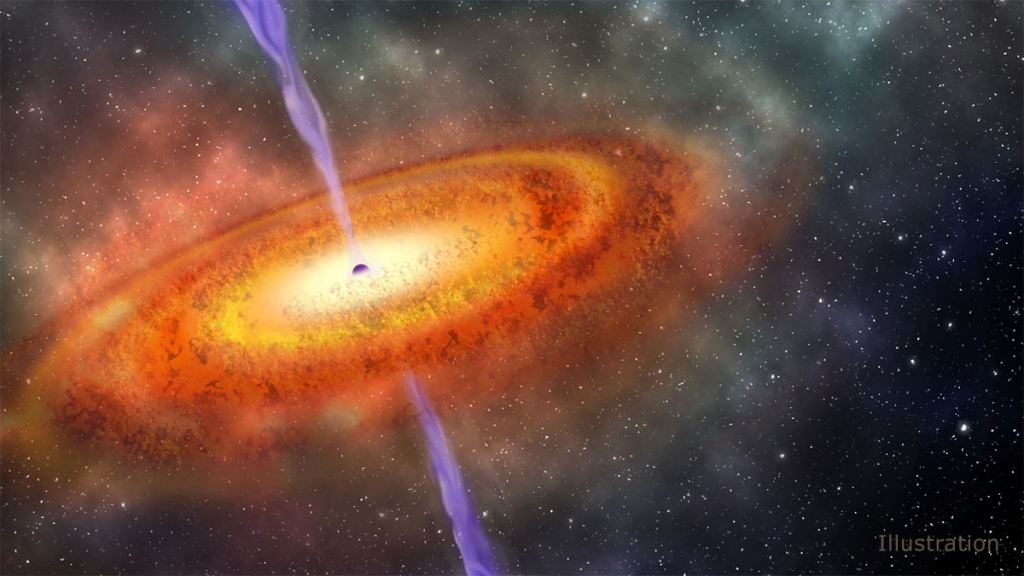Astronomy Jargon 101: Quasar

In this series we are exploring the weird and wonderful world of astronomy jargon! You’ll be feeling very powerful after today’s topic: the quasar! In the 1950’s radio astronomers got quite a surprise. They thought they were looking for interesting radio sources within the Milky Way galaxy, but instead they found points of super-intense radio emission apparently coming from deep space. They didn’t quite know what to make of them, but they did note that they were a) kind of star-like, and b) definitely some sort of object. A quasi-stellar object. A QSO. A Quasar. Quasars are among the most luminous objects in the entire universe. They can literally be seen from the other side of the cosmos. In fact, the nearest quasar is about 600 million light-years away. The energy output of a single quasar can handily top that of a million galaxies put together. The intense radiation of a quasar is powered by, of all things, a giant black hole. But not just any big black hole: a supermassive black hole. It’s thought that every galaxy in the entire universe hosts a supermassive black hole in its center. That black hole, which can weigh anywhere from a a few million times the mass of the sun to well over a few hundred billion solar masses, is a gigantic, hungry, monster. Gas, dust, and even wayward stars find themselves caught in the gravitational grip of those black holes. As they pile together on their way to the event horizon (and their doom), the gas heats up, reaching temperatures of over a trillion degrees (Fahrenheit or Celsius, it doesn’t matter). At those extreme temperatures, the gas creates huge electric and magnetic fields. Those electric and magnetic fields in turn shape the gas, forcing some of it to follow twisting, winding paths around the black hole, eventually shooting out in the form of long, thin jets of relativistic plasma. Those jets blast out copious amounts of radio emission – the signature of a quasar. The post Astronomy Jargon 101: Quasar appeared first on Universe Today.
Read original article here.
Written by: Paul M. Sutter

Facebook Comments